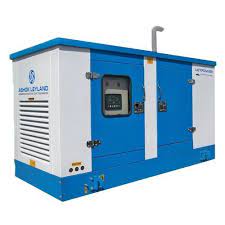Generator Installation
Installing a generator is a significant decision for homeowners and businesses alike, especially in areas prone to power outages. Whether you need a backup power source during emergencies or a primary power source for your operations, understanding the installation process is crucial to ensure safety and efficiency.
1. Understanding Generator Types
Generators come in various types, including portable and standby (or whole-house) generators. Portable generators are ideal for temporary power needs, while standby generators are permanently installed and automatically activate during a power failure. Selecting the right type is the first step in the installation process.
2. Assessing Power Needs
Before installation, it’s essential to assess your power requirements. Identify the appliances and systems you want to power during an outage. This includes heating and cooling systems, refrigerators, and essential electronics. A licensed electrician can help calculate your total wattage needs to determine the appropriate generator size.
3. Choosing the Right Location
The location of your generator is crucial for optimal performance and safety. Standby generators should be placed outdoors, ideally on a concrete pad or gravel base, at least five feet away from windows, doors, and vents to prevent carbon monoxide buildup. Additionally, consider local zoning laws and regulations regarding generator placement.
4. Preparing for Installation
Once you have selected the generator and location, prepare the installation area. This may involve clearing debris, leveling the ground, and ensuring there’s adequate ventilation. If you’re installing a natural gas or propane generator, coordinate with your fuel supplier to ensure a reliable gas line connection.
5. Electrical Connections
Electrical connections are critical to ensure the generator operates safely. This step typically involves:
-
Transfer Switch Installation: A transfer switch connects the generator to your home’s electrical panel. This device prevents backfeeding electricity into the grid, which can be dangerous for utility workers and your equipment. A licensed electrician should handle this installation.
-
Wiring: Proper wiring is essential to handle the generator’s power output. Ensure that all connections are tight and up to code to avoid potential hazards.
6. Fuel Supply Setup
For generators powered by natural gas or propane, you’ll need a dedicated fuel supply line. Ensure that this line is correctly installed and meets local codes. If you’re using a diesel or gasoline generator, make sure you have a secure storage method for fuel that complies with safety regulations.
7. Testing the Generator
Once everything is installed, conduct a thorough test of the generator. Start the unit and check for proper operation. Test the automatic transfer switch to ensure it activates when the main power goes out. This step is vital to confirm that your system works correctly before an actual outage occurs.
8. Regular Maintenance
To ensure longevity and reliability, perform regular maintenance on your generator. This includes changing the oil, replacing filters, and running the generator periodically to keep it in good working condition. Many manufacturers recommend a professional inspection at least once a year.
Conclusion
Generator installation is a complex process that requires careful planning and execution. By assessing your power needs, selecting the right generator, and following safety protocols, you can ensure a reliable power source for your home or business. Always consult with licensed professionals for installation to guarantee compliance with safety standards and local regulations. With a properly installed generator, you can enjoy peace of mind knowing that you are prepared for any power outage.
